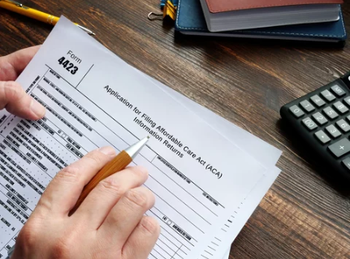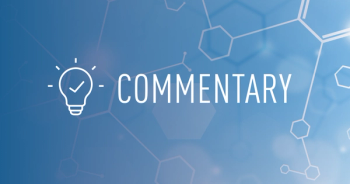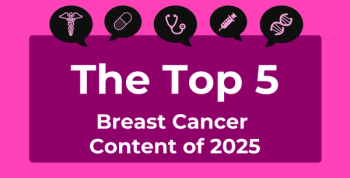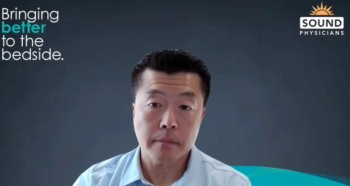
The American Journal of Managed Care
- October 2025
- Volume 31
- Issue 10
- Pages: e295-e301
The Biosimilar Shift: Trending Infliximab Biosimilar Utilization and Associated Cost Savings for Commercial Insurance
Infliximab biosimilars created price competition causing insurance claims costs for infliximab originator and infliximab biosimilars to decrease, generating significant savings to the health care system.
ABSTRACT
Objectives: To evaluate the effects of the introduction of infliximab biosimilars on the cost of infliximab originator, the associated cost savings with infliximab biosimilars, and the market utilization of infliximab products in the first 5 years after infliximab biosimilars became available in the US.
Study Design: Retrospective longitudinal analysis.
Methods: A retrospective longitudinal analysis with an interrupted time series analysis was performed using the Merative MarketScan Commercial Claims and Encounters Database for outpatient infliximab claims from January 1, 2015, to December 31, 2021, for patients aged 0 to 64 years with commercial insurance. Outcomes of interest included market share of all infliximab products, cost per vial and infusion, and projected cost savings to the health care system after adjusting for inflation using the US Bureau of Labor Statistics Consumer Price Index for medical care.
Results: A total of 471,731 claims from 42,099 unique patients met the inclusion criteria. Using an interrupted time series analysis, there was a 13-month lag before infliximab biosimilar utilization began to affect originator drug cost. Infliximab utilization increased to 26% by December 2021, and the price per infusion and per vial of infliximab originator decreased by 53% and 62%, respectively, from December 2017 to December 2021. The introduction of infliximab biosimilars has saved the US health care system an estimated $260 million to $842 million.
Conclusions: Utilization of infliximab biosimilars steadily increased in the first 5 years after market entry. The competition created by biosimilars has contributed to significant health care savings and a decrease in the total cost of both the infliximab originator drug and its biosimilars.
Am J Manag Care. 2025;31(10):e295-e301.
Takeaway Points
The market entry of infliximab biosimilars has fueled price competition, decreasing insurance claims costs for the infliximab originator (Remicade) and biosimilars and generating significant savings to the health care system.
- Our study found that the introduction of infliximab biosimilars saved the US health care system between $260 million and $842 million in the first 5 years of market availability.
- Infliximab was the first biologic in the US to have multiple biosimilars on the market, with its first biosimilar approval in 2016. Despite minimal market adoption the first 2 years, infliximab biosimilars had captured 26% of the market share by the end of 2021.
- Increased utilization of infliximab biosimilars in the US led to a significant drop in the cost of the originator drug, which had steadily increased until December 2017. From December 2017 to December 2021, the cost of the infliximab originator per infusion and per vial decreased by 53% and 62%, respectively.
The advancement and development of biologic medical therapies have revolutionized the management of autoimmune diseases, significantly enhancing patients’ quality of life.1-3 Despite these drugs’ effectiveness, their high costs for payers and patients remain a barrier.4-7 In 2021, the US spent $260 billion on biologic therapies, accounting for 46% of all pharmaceutical drug spending.8
Biosimilars, which are highly similar in potency, safety, and efficacy to the originator biologic products, were initially priced lower, offering substantial cost savings to the health care system.9 To remain financially competitive, the originator biologic needs to lower its cost in response to biosimilars.3,4,10 Increased adoption of biosimilars in the US could save an estimated $54 billion by 2026.9
Infliximab (Remicade), an anti–tumor necrosis factor medication, was the second biologic to have a biosimilar approved in the US and the first to have multiple biosimilar products available (
The primary aim of this study was to analyze individual claims data using a large US commercial database to evaluate how the introduction of multiple infliximab biosimilars to the US market affected the cost of the infliximab originator.
METHODS
Database
Infliximab outpatient claims were obtained from the Merative MarketScan Commercial Claims and Encounters Database, which provides deidentified, longitudinal, patient-level claims and specialty data from more than 263 million unique patients in the US. This database has unweighted data including those from inpatient, outpatient, and prescription drug services from more than 350 private health payers, multiple large employers, early (non-Medicare) retirees and dependents, and Consolidated Omnibus Budget Reconciliation Act participants.19
Study Design: Inclusion and Exclusion Criteria
Outpatient infliximab claims including infusions done at hospital outpatient departments, physician offices, and home infusions from January 1, 2015, to December 31, 2021, were identified in the MarketScan database and reviewed for inclusion. The inclusion criteria encompassed individuals aged 0 to 64 years with a claim for either the infliximab originator or an infliximab biosimilar, identified by corresponding Current Procedural Terminology (CPT) codes (Table 1).20 Initially, a nonspecific CPT code (Q5102) was assigned for biosimilars infliximab-dyyb (Inflectra) and infliximab-abda (Renflexis) until March 31, 2018, when the CPT code was retired. Individual codes for infliximab-dyyb and infliximab-abda were implemented April 1, 2018.20
Claims for patients 65 years and older were excluded, as these patients may also have Medicare, which is not included in the MarketScan Commercial Claims and Encounters Database. Additional claims were excluded if the unique patient identification number (enrollee ID) or the patient’s health care plan information was missing. Partially and fully capitated health plans were excluded due to the difficulty in assessing outcomes, as they charge a set fee for services. Claims were also excluded if (1) the cost was missing or negative, (2) the units of infliximab (1 unit = 10 mg) were missing, or (3) the number of units was outside established thresholds (< 100 mg or > 1500 mg of infliximab). These thresholds were based on common dosing ranges from 3 mg/kg to 10 mg/kg, depending on the indication for use. The inclusion range, 100 mg to 1500 mg (range, 17.2 to 99.4 percentile of all claims reviewed before setting cutoffs) captures patients on standard dosing with a weight up to 150 kg.
Demographic Data Collected
Patient age, geographic region, and International Classification of Diseases, Ninth Revision and International Statistical Classification of Diseases, Tenth Revision codes (hereafter, ICD codes) for FDA-approved infliximab indications (Crohn disease, ulcerative colitis, rheumatoid arthritis, ankylosing spondylitis, psoriatic arthritis, and plaque psoriasis) were recorded for each unique patient based on the first claim for each infliximab product they received. If a patient did not have an FDA-approved indication associated with their infliximab claim(s), then the indication was classified as “other.” Some patients had ICD codes for multiple FDA-approved indications and were recorded for each indication, hence the total percentage for indications will be more than 100%.
Outcomes of Interest
The primary outcome of interest was total cost of the infliximab originator per vial (1 vial = 100 mg of infliximab) and per infusion. Secondary outcomes included the market share of each infliximab product over time, the costs of infliximab biosimilars, patient annualized out-of-pocket (OOP) costs, and the total savings generated with the introduction of infliximab biosimilars.
Statistical Analysis
All cost data were adjusted for inflation to reflect prices in December 2021 US$ using the US Bureau of Labor Statistics Consumer Price Index for medical care.21 Infliximab claims were aggregated by month with the median and IQR reported. Descriptive statistics were reported for the outcomes of interest for the infliximab originator and biosimilars. The total cost includes insurance cost and patient OOP costs. The patient OOP cost equals the sum of co-payment, coinsurance, and deductible.
Interrupted time series (ITS) was performed to analyze the change in infliximab originator cost per infusion and cost per vial over time. ITS analyzes the effects an intervention (ie, introduction of infliximab-dyyb) had on deviation from the expected trend based on a preintervention period (time with only the infliximab originator on the market). As previously stated in the literature, there was a lag period for uptake of infliximab biosimilars.14-16 Therefore, a structural break was used to identify the interruption point, rather than using the time point of November 2016 when infliximab-dyyb entered the market as the interruption point. The interruption point was identified using the sup-Wald test (ie, the supremum, or maximum, of the sample Wald tests). The ITS utilized ordinary least squares regression for estimating and testing a change in level and change in slope post interruption.22 Autocorrelation was tested for using the Durbin-Watson statistic and was accounted for using Newey-West SEs, with a lag value determined by the Cumby-Huizinga test.23
Using the interruption point, we assessed the impact of infliximab biosimilars on the cost of the infliximab originator by analyzing the price change of the infliximab originator pre– and post interruption point. By calculating how much the infliximab originator price rose pre–interruption point, estimates could be made predicting what the infliximab originator price would be if infliximab biosimilars had not entered the market. The total health care savings in our unweighted cohort with infliximab biosimilars entering the market were calculated, with the assumption that the cost of the infliximab originator would continue to rise at the same rate as it did from 2015 to 2017, pre–interruption point. A range was obtained by calculating the projected infliximab originator median and mean cost per infusion per month had the interruption not occurred and multiplying them by the number of infusions per month. Then the actual claims costs were subtracted from the actual cost for each infliximab product for a particular month. Statistical analyses were conducted using SAS 9.4 (SAS Institute Inc) and Stata 16.1 (StataCorp LLC).
RESULTS
Baseline Data and Demographics
From 2015 to 2021, there were 700,111 infliximab claims associated with the included CPT codes (Table 1) in the MarketScan database. Of these, 471,731 claims representing 42,099 unique patients met our strict inclusion criteria (
Most patients (74%) received an infliximab product for inflammatory bowel disease (IBD), with Crohn disease being the most common indication (46%). Preferred provider organizations were the most frequent plan type, accounting for the majority of infliximab infusions (61%) (Table 2).
Infliximab Biosimilar Utilization
There was a time lag for biosimilar utilization following market introduction (
Interruption Point Determination
January 2018 was identified as the interruption point by ITS analysis (sup-Wald statistic = 2497.49; P < .0001). This was 13 months after the introduction of infliximab-dyyb to the market and marked the beginning of a decrease in the cost of the infliximab originator (
Total Cost of Infliximab Originator
Prior to the market entry of biosimilars,the median cost per infusion and per vial for the infliximab originator steadily increased from January 2015 until December 2017. Prices rose by $30 (95% CI, $27-$33; P < .0001) per infusion per month and $4 (95% CI, $4-$4; P < .0001) per vial per month. The price of the infliximab originator peaked in December 2017 at $6332 per infusion (95% CI, $6262-$6401) and $1100 per vial (95% CI, $988-$1542) (Figure 2 [A and B]).
At the interruption point in January 2018, the infliximab originator price decreased by $91 (95% CI, –$242 to $59; P = .2296) per infusion and $3 (95% CI, –$25 to $30; P = .8445) per vial. After January 2018, the infliximab originator price decreased by $100 (95% CI, –$106 to –$94; P < .0001) per infusion per month and $19 (95% CI, –$20 to –$18; P < .0001) per vial per month (
The price per infusion of the infliximab originator decreased by 52.6% from December 2017 ($6332 [95% CI, $6262-$6401]) to December 2021 ($3000 [95% CI, $2883-$3116]) (P < .0001) (Figure 3 [A]). The price per vial of the infliximab originator decreased by 62.0% from December 2017 ($1091 [95% CI, $98-$1544]) to December 2021 ($415 [95% CI, $393-$438]) (P < .0001) (Figure 3 [B]).
Total Cost of Infliximab Biosimilars
The median cost per vial and per infusion for each infliximab biosimilar product is shown in Figure 2 (A and B). CPT code Q5102 was excluded from these figures due to the small number of claims, the inability to distinguish between the 2 biosimilar products included in this code, and the wide IQR for the claims (eAppendix Figure 1 [
The median cost per vial for infliximab-dyyb and infliximab-abda steadily decreased from June 2018 ($1021 [95% CI, $760-$1593] and $823 [95% CI, $759-$1213], respectively) to the end of 2021 ($430 [95% CI, $412-$943] and $445 [95% CI, $388-$773]). Infliximab-axxq (Avsola) entered the US market in July 2020, with claims for this CPT code first appearing in January 2021 and a cost per vial of $541 (95% CI, $541-$541); by December 2021, it had decreased in cost to $471 (95% CI, $471-$492) per vial (Figure 2 [A]).
Patient OOP Costs
The median patient OOP costs per year for allinfliximab products increased from $840 in 2015 to $1333 in 2020, then decreased to $950 per year in 2021 (eAppendix Figure 2). These were annualized OOP costs, and there was a seasonality to when the costs occurred. Most patients had OOP costs for the first few months of the year, but once they met their annual maximum, their OOP costs became zero. For patients receiving the infliximab originator, OOP costs followed a similar trend, rising from 2015 to 2020 and then declining in 2021. OOP costs for infliximab biosimilars were zero for multiple years and are not reported in eAppendix Figure 2.
Cost Savings to the System
Using the estimated median and mean costs of the infliximab originator from January 2018 to December 2021, the introduction of infliximab biosimilars resulted in an estimated cost savings of $259,530,473 to $842,157,955 for the health care system (in 2021 US$).
DISCUSSION
Using the MarketScan database, the estimated insurance claims cost savings associated with infliximab biosimilar use in the first 5 years after biosimilar market introduction in the US ranged from $260 million to $842 million. This calculation is based solely on unweighted commercial outpatient claims from MarketScan. These savings do not account for Medicare and Medicaid pricing, which are usually lower than commercial prices. Nevertheless, commercial claim costs decreased during the first 5 years that infliximab biosimilars were available in the US.
Our findings support the hypothesis that the introduction of multiple infliximab products created price competition in the marketplace, which was correlated with the decreasing commercial costs of the infliximab originator. Initially, infliximab biosimilars coded as Q5102 had costs similar to or higher than the originator drug, but this pricing fluctuation stabilized by the interruption point in January 2018, consistent with findings from Peng et al.18 From that interruption point on, infliximab biosimilar utilization increased, and the cost per vial and per infusion for both the infliximab originator and its biosimilars decreased.
Peng et al performed a multinational analysis of infliximab biosimilars, using sales data instead of insurance claims from 2010 to 2020. Their data showed a similar price trend for the infliximab originator vs all infliximab biosimilars.18 However, they did not break down sales by each infliximab product as we did, nor did they evaluate the trend of biosimilar use by age, insurance type, disease type, and region.18
The infliximab originator first entered the market in 1998 and had 18 years of market exclusivity in the US. The lack of competition during this time allowed for the escalation in infliximab pricing13 until January 2018. The rising cost of infliximab originator created access barriers for patients due to insurance obstacles and high OOP costs. In a survey of patients with IBD, 25% of respondents reported delayed medical care for various reasons, with more than 50% of delays attributed to the cost of care.7 Respondents reported skipping medication, taking less medication than prescribed, using alternative therapies, and even purchasing medication from another country to reduce costs.7 This highlights the need for decreased cost of care and the role that biosimilars can play in the process.
In our study, infliximab biosimilar usage was only 3% at the end of 2018 but increased to 26% by 2021. Another barrier is the lack of inclusion of biosimilars on insurance formularies due to rebates or discounts offered to insurance companies, which keeps the originator as the preferred product. Feng et al used the MarketScan database to analyze infliximab claims from 2014 to 2018 and found no difference in OOP costs for patients receiving the infliximab originator vs infliximab biosimilars.24 However, this study took place at the beginning of our ITS point when biosimilar usage was minimal.
Limitations
Because the MarketScan Commercial Claims and Encounters Database is limited to commercial claims, these findings may not be generalizable to patients with public insurance. Public insurance claims have established reimbursement rates that are lower than commercial claims, and the cost of the claim does not necessarily reflect the amount reimbursed. By excluding public insurance claims, the cost savings calculated using commercial claims does not fully capture the complexities of the US health care system or accurately reflect the realized savings. Furthermore, the use of CPT code Q5102 restricts our ability to fully analyze initial uptake and cost for each biosimilar at its market introduction.
Despite the known purpose of biosimilars to help promote cost savings, limitations still exist in the ability to fully assess the true cost to insurers and patients. The MarketScan database does not look at average sales price or the cost to acquire the medication from the manufacturer, nor does it include rebates that insurers receive for using preferred products, which may generate additional cost savings. Only the costs billed to insurers are reflected in the database. Although the MarketScan database does provide patient cost data, including deductibles, coinsurance, and co-payment for OOP payments, it is difficult to know whether the decrease in OOP cost is due to biosimilar use or to patients meeting OOP maximums from other claims such as medications, procedures, or office visits or from other family members. Even after we controlled for inflation, patients on the infliximab originator saw an increase in OOP costs from 2015 to 2020, but OOP costs then decreased in 2021. We were unable to interpret why infliximab biosimilar OOP costs were zero for multiple years. Although patients may not see immediate savings with the use of biosimilars, there is hope that the overall health care savings could offset or delay increases in patient deductibles and premiums, ultimately benefiting patients.
Implications and Future Research
After a 13-month lag in biosimilar adoption, there was a slow but steady increase in the uptake of infliximab biosimilars, and the costs of both the infliximab originator and its biosimilars steadily decreased from 2018 to 2021. However, future research is needed to study the ongoing market competition and prices among these infliximab products to see whether biosimilars continue to gain market share and drive down the cost per infusion. Additionally, unbranded infliximab was introduced to the market in 2022,11 which may generate further cost savings. Future research could also evaluate the cost impact of other biologic biosimilars that are now entering the market and analyze whether there is a similar lag time in biosimilar utilization.
CONCLUSIONS
The introduction of infliximab biosimilars significantly decreased the commercial costs of the infliximab originator. However, there was a significant delay between the introduction of biosimilars and their uptake. Consequently, costs savings were not realized until 2018, 13 months after the first infliximab biosimilar was introduced. The US commercial health care system experienced savings of at least $260 million to $842 million with the introduction of infliximab biosimilars. Unfortunately, it is uncertain whether patients are directly benefiting from these savings. This study supports the notion that biosimilars can help curb health care spending in the US and influence the pricing of originator biologics. This can improve patient access to biologics, thereby improving health outcomes and quality of life for patients with autoimmune diseases.
Data Availability Statement
The data that support the findings of this study are available from Merative MarketScan Research. Restrictions apply to the availability of these data, which were used under license for this study. Data are available from the corresponding author upon request with permission from Merative MarketScan Research.
Author Affiliations: Division of Pediatric Gastroenterology, Hepatology, and Nutrition (SRP, BB, JLD, HKM, RMM), Biostatistics Resource (MA-R), Department of Pharmacy (MM), and Center for Child Health Equity and Outcomes Research, Abigail Wexner Research Institute (JLD), Nationwide Children’s Hospital, Columbus, OH; Department of Pediatric Gastroenterology, Hepatology & Nutrition, St Christopher’s Hospital for Children (SRP), Philadelphia, PA; Center for Biostatistics, Department of Biomedical Informatics, College of Medicine, The Ohio State University (MA-R), Columbus, OH; The Hilltop Institute, University of Maryland, Baltimore County (MCM), Baltimore, MD; Department of Pediatrics, The Ohio State University Wexner Medical Center (BB, JLD, HKM, RMM), Columbus, OH.
Source of Funding: Dr Maltz received an internal voucher from The Ohio State University Center of Clinical and Translational Science Award of $3000 to fund biostatistician support. Dr Maltz also has a Pfizer Inc education grant on biosimilars; this grant had no role in the design and conduct of the study; collection, management, analysis, and interpretation of the data; preparation, review, or approval of the manuscript; and decision to submit the manuscript for publication.
Author Disclosures: Dr Maltz has received a Pfizer Inc biosimilar education grant and honoraria from the Crohn’s and Colitis Foundation. The remaining authors report no relationship or financial interest with any entity that would pose a conflict of interest with the subject matter of this article.
Authorship Information: Concept and design (SRP, MA-R, MM, MCM, BB, JLD, RMM); acquisition of data (MA-R, JLD, RMM); analysis and interpretation of data (SRP, MA-R, MCM, BB, HKM, RMM); drafting of the manuscript (SRP, MA-R, MM, BB, JLD, HKM, RMM); critical revision of the manuscript for important intellectual content (SRP, MA-R, MM, MCM, BB, JLD, HKM, RMM); statistical analysis (SRP, MA-R, MCM, RMM); provision of patients or study materials (RMM); obtaining funding (SRP); administrative, technical, or logistic support (SRP, RMM); and supervision (JLD, RMM).
Address Correspondence to: Samantha R. Paglinco, DO, St Christopher’s Hospital for Children, 160 E Erie Ave, Philadelphia, PA 19134. Email: spaglinco2@gmail.com.
REFERENCES
1. Russell AS. Quality-of-life assessment in rheumatoid arthritis. Pharmacoeconomics. 2008;26(10):831-846. doi:10.2165/00019053-200826100-00004
2. Abbasi M, Mousavi MJ, Jamalzehi S, et al. Strategies toward rheumatoid arthritis therapy; the old and the new. J Cell Physiol. 2019;234(7):10018-10031. doi:10.1002/jcp.27860
3. Vogelaar L, Spijker AV, van der Woude CJ. The impact of biologics on health-related quality of life in patients with inflammatory bowel disease. Clin Exp Gastroenterol. 2009;2:101-109. doi:10.2147/ceg.s4512
4. Boytsov N, Zhang X, Evans KA, Johnson BH. Impact of plan-level access restrictions on effectiveness of biologics among patients with rheumatoid or psoriatic arthritis. Pharmacoecon Open. 2020;4(1):105-117. doi:10.1007/s41669-019-0152-1
5. Wallace ZS, Harkness T, Fu X, Stone JH, Choi HK, Walensky RP. Treatment delays associated with prior authorization for infusible medications: a cohort study. Arthritis Care Res (Hoboken). 2020;72(11):1543-1549. doi:10.1002/acr.24062
6. Heidari P, Cross W, Crawford K. Do out-of-pocket costs affect medication adherence in adults with rheumatoid arthritis? a systematic review. Semin Arthritis Rheum. 2018;48(1):12-21. doi:10.1016/j.semarthrit.2017.12.010
7. Rubin DT, Feld LD, Goeppinger SR, et al. The Crohn’s and Colitis Foundation of America survey of inflammatory bowel disease patient health care access. Inflamm Bowel Dis. 2017;23(2):224-232. doi:10.1097/MIB.0000000000000994
8. Biosimilars in the United States 2023-2027: Competition, Savings, and Sustainability. IQVIA Institute; January 31, 2023. Accessed September 30, 2024.
9. Mulcahy AW, Hlavka JP, Case SR. Biosimilar cost savings in the United States: initial experience and future potential. Rand Health Q. 2018;7(4):3.
10. Mouslim MC, Trujillo AJ, Alexander GC, Segal JB. Association between filgrastim biosimilar availability and changes in claim payments and patient out-of-pocket costs for biologic filgrastim products. Value Health. 2020;23(12):1599-1605. doi:10.1016/j.jval.2020.06.014
11. Purple Book database of licensed biological products. FDA. Updated September 25, 2024. Accessed October 1, 2024.
12. Melsheimer R, Geldhof A, Apaolaza I, Schaible T. Remicade (infliximab): 20 years of contributions to science and medicine. Biologics. 2019;13:139-178. doi:10.2147/BTT.S207246
13. San-Juan-Rodriguez A, Gellad WF, Good CB, Hernandez I. Trends in list prices, net prices, and discounts for originator biologics facing biosimilar competition. JAMA Netw Open. 2019;2(12):e1917379. doi:10.1001/jamanetworkopen.2019.17379
14. Chen AJ, Gascue L, Ribero R, Van Nuys K. Uptake of infliximab biosimilars among the Medicare population. JAMA Intern Med. 2020;180(9):1255-1256. doi:10.1001/jamainternmed.2020.3188
15. Roberts ET, Li J, Bansback N, et al. Patterns of infliximab biosimilar uptake for Medicare, Medicaid, and private insurance from 2016 to 2022. Arthritis Rheumatol. 2024;76(12):1739-1742. doi:10.1002/art.42963
16. Kim SC, Sarpatwari A, Landon JE, Desai RJ. Utilization and treatment costs of tumor necrosis factor inhibitors after the introduction of biosimilar infliximab in the United States. Arthritis Rheumatol. 2020;72(6):1036-1038. doi:10.1002/art.41201
17. Maltz RM, McClinchie MG, Boyle BM, et al. Biosimilars for pediatric patients with inflammatory bowel disease: pediatric gastroenterology clinical practice survey. J Pediatr Gastroenterol Nutr. 2023;76(5):616-621. doi:10.1097/MPG.0000000000003750
18. Peng K, Blais JE, Pratt NL, et al. Impact of introducing infliximab biosimilars on total infliximab consumption and originator infliximab prices in eight regions: an interrupted time-series analysis. BioDrugs. 2023;37(3):409-420. doi:10.1007/s40259-023-00589-3
19. Merative MarketScan research databases. Merative. Accessed October 1, 2024.
20. List of CPT/HCPCS codes. CMS. Updated September 10, 2024. Accessed October 1, 2024.
21. Measuring price change in the CPI: medical care. US Bureau of Labor Statistics. Updated May 28, 2024. Accessed October 1, 2024.
22. Shadish WR, Cook TD, Campbell DT. Experimental and Quasi-Experimental Designs for Generalized Causal Inference. Houghton Mifflin Company; 2002.
23. Durbin J, Watson GS. Testing for serial correlation in least squares regression. I. Biometrika. 1950;37(3-4):409-428.
24. Feng K, Kesselheim AS, Russo M, Rome BN. Patient out-of-pocket costs following the availability of biosimilar versions of infliximab. Clin Pharmacol Ther. 2023;113(1):90-97. doi:10.1002/cpt.2763
Articles in this issue
Newsletter
Stay ahead of policy, cost, and value—subscribe to AJMC for expert insights at the intersection of clinical care and health economics.









































